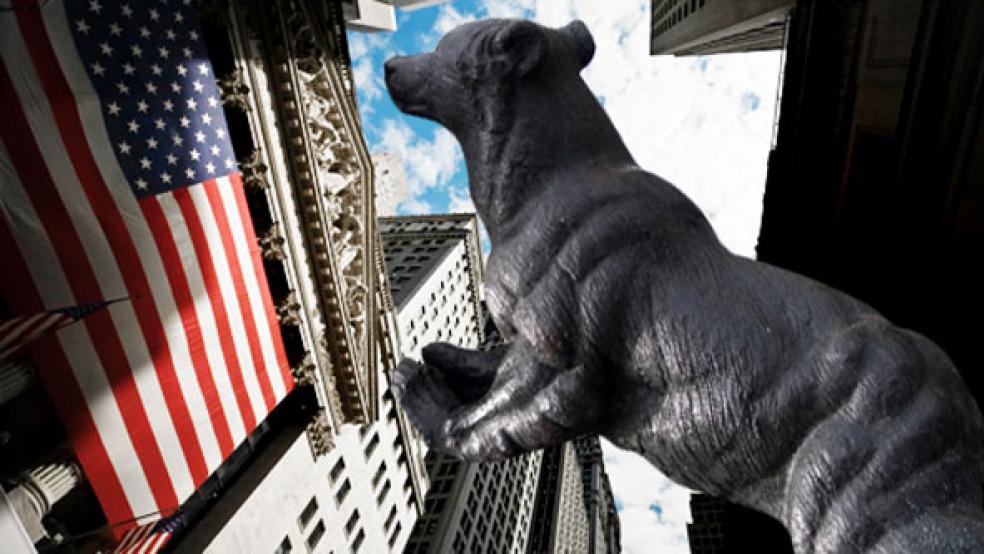A sagging stock market is good news for Donald Trump.
The S&P 500 has fallen in eight straight sessions for the first time since October 2008, shortly after Lehman Brothers collapsed and as the financial crisis unfolded. Only two other losing streaks over the past 20 years have reached seven days, with both of those coming in 2011, during the European debt crisis.
Market observers are pinning the blame for the current slump on election uncertainty, as Trump closes the gap against Hillary Clinton in national polls and jittery investors price in the rising odds that he could win the presidency.
The last three 8 day losing streaks for the S&P 500 all took place during an #election year. (2016, 2008, 1996).
— Ryan Detrick, CMT (@RyanDetrick) November 3, 2016
“A Trump win is only now starting to filter into asset prices,” Nicholas Colas, chief market strategist at brokerage company Convergex, wrote Thursday morning. “A victory for him with stocks trading where they are today would likely shave 5-10% off asset values. That’s not to say stocks endorse one candidate over another, just that investors understand the status quo (Clinton) and fear the unknown (Trump).”
Related: How Much Does Wall Street Love Hillary? Let’s Count the $78 Million Ways
This latest losing streak has been far less painful than the 2008 plunge or most other seven-session losing streaks. The S&P 500 plunged 22 percent over seven days back in October 2008. And since 1950, the S&P 500 has posted a seven-day losing streak 76 times, with an average loss of 5.3 percent. This time, the index has lost less than 3 percent in the eight day span and the daily losses have never reached even 1 percent. Thursday also marked the 15th straight day that S&P 500 had risen at one point during trading — the longest such streak in over a year.
Also, the CBOE Volatility Index (VIX) — Wall Street’s so-called fear gauge — has also risen for eight straight days, gaining almost 70 percent over that time.
The American Association of Individual Investors Sentiment Survey for the week ended Nov. 2 found that just 23.6 percent described themselves as bullish, the lowest level in nearly six months. “Incredibly, this is now 52 consecutive weeks the bulls have come in beneath the long-term average of 38.5%, trouncing the previous record of 33 weeks,” analysts at LPL Financial noted Thursday morning. “This is only one gauge of investor sentiment, but we’ve also seen massive flows out of equity funds and other sentiment polls show increasing levels of concern ahead of the election.”
If stocks’ recent losing streak is an indicator of Trump’s momentum, the market’s performance in recent months signaled bad news for Clinton. The S&P 500 fell 2.2 percent from July 31 through the end of October. Sam Stovall, chief investment strategist at research firm CFRA, noted in a report yesterday that since 1944, when the index fell over those months leading up to a presidential election, the incumbent candidate or party has lost 86 percent of the time.
Related: Stocks Are Making Some Weird Moves Before This Strange Election
“The only failure occurred in 1956,” Stovall wrote, “more likely due to geo‐political tensions surrounding Egypt’s seizure of the Suez Canal and the Hungarian uprising than the belief that Adlai Stevenson would unseat Dwight Eisenhower.”
It’s worth keeping in mind, though, that these types of historical indicators might not mean very much — especially in a race that has already upended so many historical precedents.
Top Reads
If This Poll Is Right, Trump Can’t Win Florida -- or the Election
Is Trump Pulling Ahead? Here’s What the Polls Are Really Saying
The Surprising Food Trend That’s Driving the Restaurant Recession





